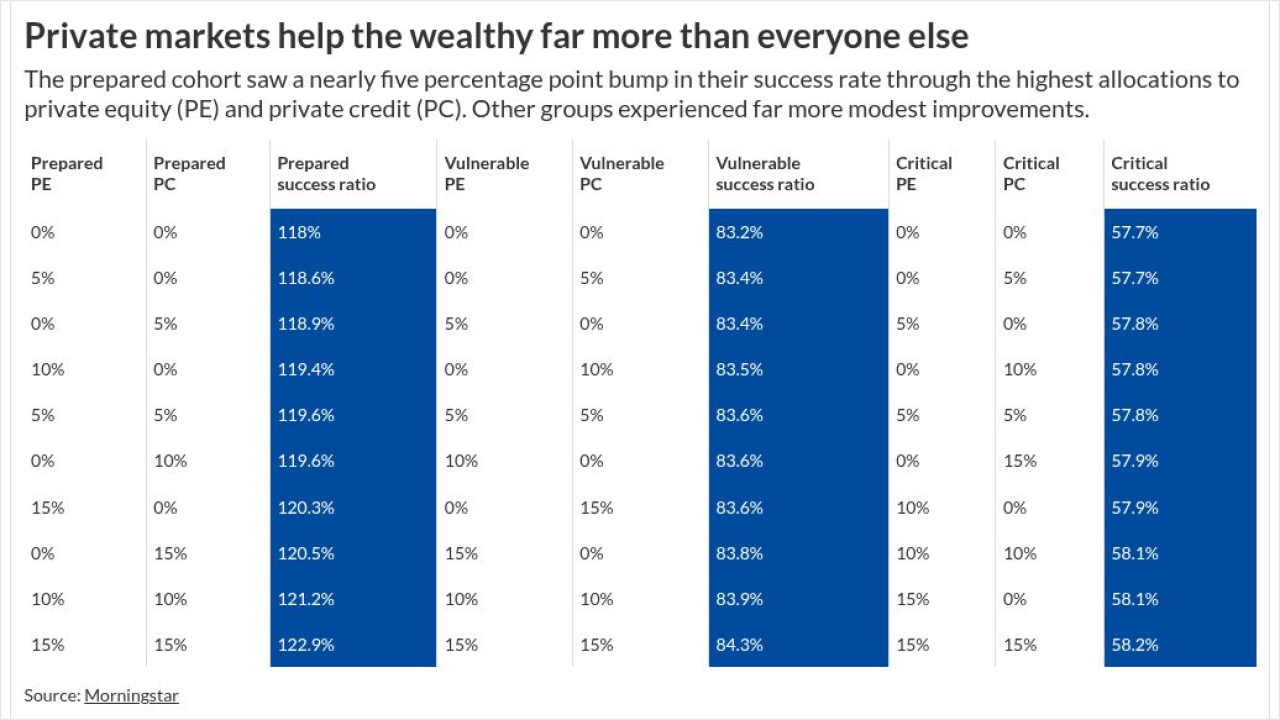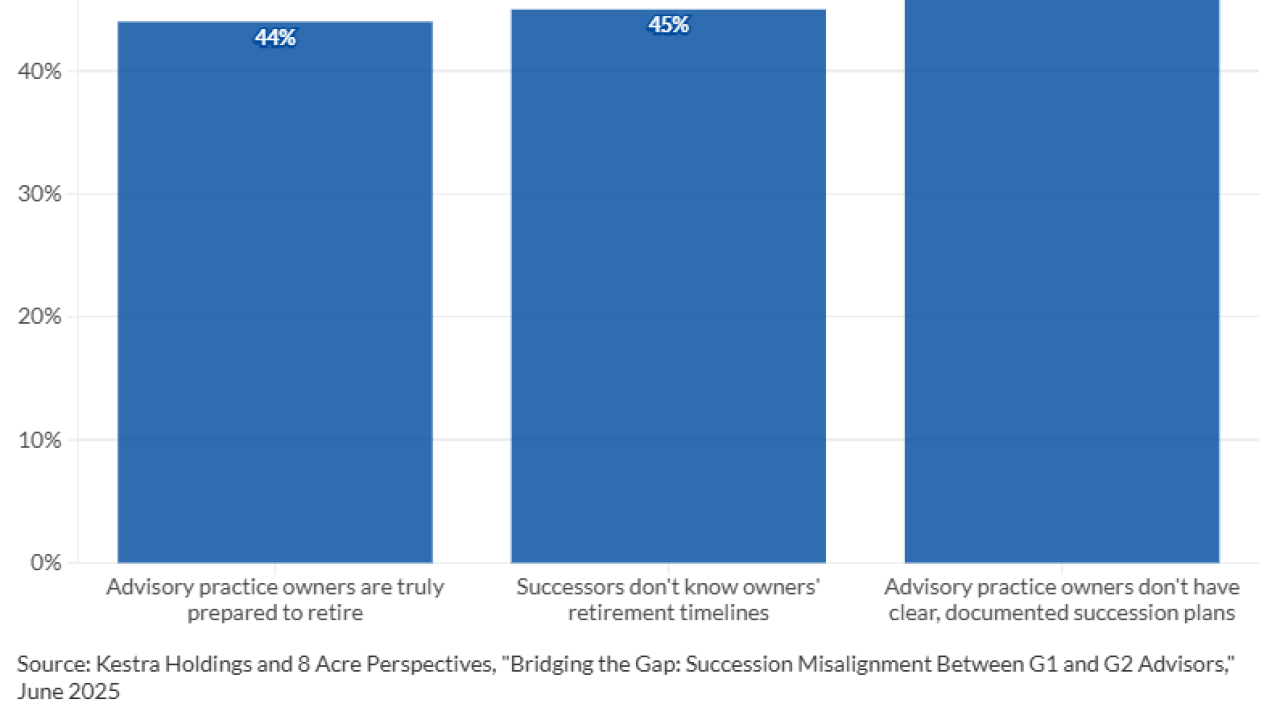It was in the summer of 2020 when we first heard murmurings from wealth management leaders about experimenting with virtual reality. The pandemic had supercharged their digital transformation efforts, but financial advisors adopting virtual reality (VR) en masse seemed years away.
Flash forward to today and it feels like extended reality (XR) — the umbrella term that encompasses any immersive technology and blends digital content with the real world, including VR and augmented reality (AR) — is having its moment in society. We see this most notably through the creation of metaverses, which are massive shared 3D worlds that you can join in VR and AR.
And the largest wealth managers are leaning in, beginning with their employees. Last October,
What remains to be seen is whether these technologies could engage real clients in meaningful new ways and if doing so will improve the long-term stickiness of the advisor/client relationship. The most bullish proponents think that as soon as next year we could see wealth managers shipping well-programmed headsets to high net worth clients to don for fully immersive portfolio reviews with their advisors. XR may also create opportunities to engage with new customers, including younger investors who may be more technology-savvy and interested in emerging areas, like NFTs. In our
What remains to be seen is whether these technologies can engage real clients in meaningful new ways and if doing so will improve the long-term stickiness of the advisor/client relationship. The most bullish proponents think that as soon as next year we could see wealth managers shipping well-programmed headsets to high-net-worth clients to don for fully immersive portfolio reviews with their advisors. XR may also create opportunities to engage with new customers, including younger investors who may be more technology-savvy and interested in emerging areas, like NFTs.
Mixed reality use cases
Increasingly, use cases are being developed that involve mixed reality, the integration of the physical and digital worlds. For example, J.P. Morgan Asset Management last year announced the launch of a
Further possibilities for client engagement could be endless, including:
The annual portfolio review. Rather than inviting clients to the office to review a PowerPoint presentation, an advisor could display a 3D personalized financial dashboard that shows real-time changes and highlights in a virtual meeting. The client would then be able to chat live with her financial advisor to discuss and visualize the best steps for her family’s finances, presenting opportunities for immersive learning and engagement.
New experiences and events. Events at pricey, remote settings could be done in XR at a fraction of the cost. Firms could host a virtual art auction and reception with art experts on hand to advise the guests. Or a firm could virtually transport clients to a sporting event, like a golf tournament, to experience the action in a new way. Imagine if an ultrahigh net worth client was interested in purchasing a yacht and you could virtually take them to a boatyard, showing them exactly how far their money could go and the implications of the purchase to their portfolio. XR could also add a new dimension to annual investor days and other investment events.
Transforming the branch experience. Bringing extended reality to the branches first could give clients (and firms) an opportunity to test using it and see if it provides a
First steps
To reach the point where wealth managers could roll out XR with clients, however, three things need to happen. Advisors must be comfortable using the technology. As more firms embrace XR to create immersive training experiences, that’s likely to happen, as will using XR technologies to engage and brainstorm with colleagues in different locations.
The greater challenge will arise around security and privacy. Firms will need to have ample storage for the headsets, conduct routine maintenance and make sure that there are adequate data security and privacy controls in place to allow for the sharing of sensitive financial and personal information.
Lastly, there needs to be a critical mass of clients engaged in XR before new use cases could be rolled out. Think of home computers and the internet: there was never a shortage of experiences and tasks that could be done over the internet, but it took time for enough consumers to explore financial services use cases, like online banking, to cause a tipping point. Until that time, firms can start with web- and mobile-based XR solutions that would be easier for clients to try.
None of these are insurmountable obstacles, and we are still in the early innings of the journey. Wealth managers should consider now how these technologies can be best applied within their organizations and use XR to engage with clients in meaningful new ways that deepen the human connection. The potential to create more immersive customer interactions, develop new offerings and improve collaboration is here, and wealth management shouldn’t overlook it.







